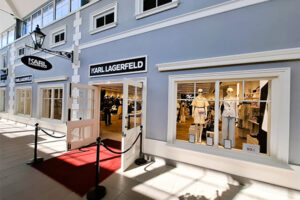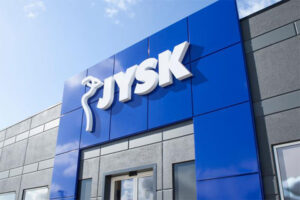The last year was extremely difficult for the whole Ukraine: the annexation of Crimea by the Russian Federation in March 2014, the war in eastern Ukraine, a deep economic crisis, and a significant devaluation of the national currency against the US dollar. The retail market was among the first to respond to the unstable socio-political and economic situation in the country. As expected, all key indicators for the retail market deteriorated in 2014.
According to Colliers International, the following were some of the trends in 2014: A decline in consumer spending and, as a consequence, retail sales; most retailers revised expansion plans downwards and concentrated on cost optimization; the completion of some shopping centers was delayed, in particular the opening of Respublika (135,000 sq m GLA) was postponed until the second half of 2015 at the earliest; and vacancy rates increased while rental rates declined. As of December 2014, prime traditional shopping center rents had decreased by 33% over the year, reaching just $70 (€64)/sq m/month. The vacancy rate increased from 3.9% to 7.8% by the year-end.
Supply
By the end of 2014, total stock of modern retail space in Kiev increased by 9%, reaching more than 1 million sq m, though Kiev still lags behind other main cities in Eastern Europe in terms of shopping center stock per capita. There are approximately 347 sq m of retail space for every 1,000 people.
In 2014, new development completions in Kiev amounted to 85,200 sq m of retail space, while in late 2014, new supply for 2013 was announced at the level of 287,000 sq m. Among major shopping centers delivered to the market in 2014 were: Atmosfera (30,000 sq m GLA), Prospekt (41,400 sq m GLA), Doma Center (8,000 sq m GLA), and Aprel (5,800 sq m).
According to developers’ data, nine new shopping centers are expected to be delivered to the market during 2015-2016, adding an estimated 590,000 sq m to existing retail stock levels in Kiev. Among major projects scheduled for delivery in 2015: Respublika (135,000 sq m GLA), Lavina Mall (127,500 sq m GLA), Retroville (83,000 sq m GLA), New Life (15,900 sq m GLA), and the second phase of the outlet village Manufactura (5,400 sq m GLA). If all the projects announced for 2015 are completed on time, this will add approximately 367,000 sq m of GLA this year.
Consumer and tenant demand
Among the trends in 2014, a decrease in consumer spending due to the socio-political and economic situation in the country was noticed. In addition, downward exchange rate fluctuations have forced retailers to revise the prices of goods upwards, which also had a negative impact on their sales. According to the State Statistics Service of Ukraine, retail sales in January through December 2014 declined by 8.6% compared with 2013. Retail sales of Kiev for the same period dropped by 3.7% and amounted to about UAH 125.9 billion (€5.5 billion). The decline in retail sales was observed primarily for non-essential goods. The retail sales of the best retailers in the fashion-segment grew by an average of 10 to 20% for the year, while the retail sales of operators in the luxury fashion segment declined significantly.
In 2014, the ‘tenant’ market narrowed considerably: some retailers froze the expansion of their chains and closed unprofitable stores; above all Russian operators, who experienced a sharp decline in retail sales due to the boycott of Russian goods and chains. In addition, due to the unstable socio-political situation in the country, many major international brands, which were actively considering expanding into Ukraine during the last three years, decided to postpone entry into the Ukrainian market until the situation stabilizes.
Vacancy and rental rates
The proportion of vacant retail space in Kiev increased during 2014 and reached 7.8% by the year-end, up from 3.9% in late 2013. The increase in the headline vacancy rate was driven by the unstable socio-political and economic situation in the country, a decrease in consumer activity, and, consequently, a decrease in retail sales, as well as the opening of new shopping centers in 2014.
Prime traditional shopping center rents for 100 to 200-sq-m stores decreased by 33% in 2014, reaching $70/sq m/month. Landlords were forced to accept a decrease in rental rates in 2014 by fixing rental rates in local currency, transitioning from fixed rents to turnover rents, and fixing the lower limit of the exchange rate with the dollar.
Prognosis
Further development of the retail real estate market will largely depend on the political and economic situation in the country. In 2015/2016, a significant volume of new supply is expected to be delivered to the Kiev retail market. Kiev is characterized by about 590,000 sq m in the active pipeline – more than a half of the existing total retail stock. At the same time, there is a high probability that completion of several shopping centers will be postponed to a later date
Before economic stabilization, tenants and landlords will seek compromise solutions to resolve the situation with rental rates, taking into account the substantial exchange rate fluctuations and drop in retail sales. In the long-term, after the political and economic situation in the country stabilizes, further increases in interest in the retail segment of Ukraine from international investors, developers, and retailers is expected.





